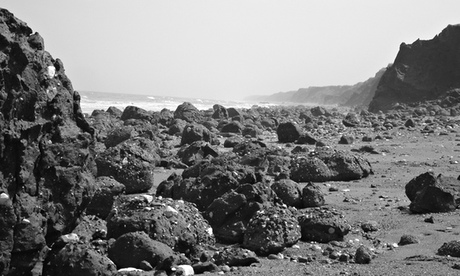
“This is the extraordinary beach at Mapplethorpe on the Holderness coast of east Yorkshire. I walked the length of the coast from Flamborough Head to Spurn Head in the summer of 2007 as part of the research for my misery memoir Walking to Hollywood. The Holderness coast is the fastest eroding coastline in Europe, losing six feet of its friable loess cliffs every year to the chomping of the waves. My idea was to walk the entire 35-odd miles within six feet of the cliff edge or bottom, thereby taking a route that could never be replicated. All went oddly from the start: I left my maps at Flamborough Head; my boots turned into flesh-eating monsters; and the weather was a weird compounding of bright sun and ghostly sea fret blowing in off the sea.”
Read the rest of Will Self’s contribution to the Guardian Review’s piece on Writers’ holiday photos in which they share the photographs that capture their favourite summer memories.
